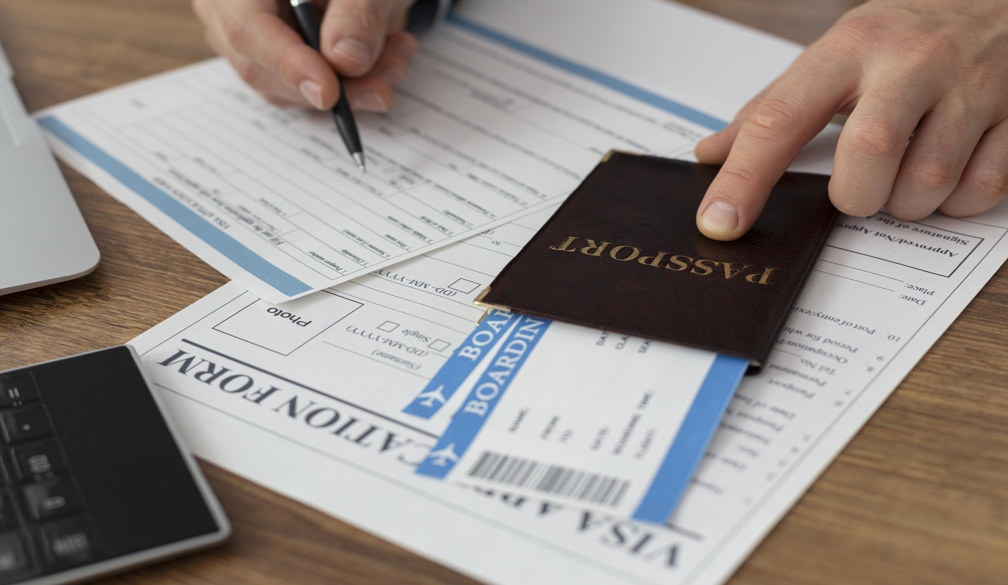Beyond the border: Why the schengen visa is more than just a travel document

For millions of travelers, the idea of exploring Europe brings images of Parisian cafés, Mediterranean coastlines, Gothic cathedrals, and buzzing city squares. But before you can get lost in the charm of Lisbon or the art of Florence, there’s a vital key that unlocks it all: the schengen visa.
Often viewed as a mere bureaucratic formality, the schengen visa is in fact a strategic tool—one that redefines how you experience an entire continent. More than just an entry pass, it is your ticket to seamless movement, spontaneous travel decisions, and real cross-border freedom.
So let’s dig deeper. What makes this visa so powerful? Why is it essential? And how can you use it to your advantage?
What exactly is the schengen visa?
The schengen visa is a short-term visa that allows non-European nationals to travel freely within the Schengen Area—a group of 27 European countries that have abolished internal borders for travelers.
Once you enter through any of these countries, you can move between the others as though they were regions of the same country. That means no passport controls at internal borders, no repeated security checks, and no need to apply for separate visas.
What makes this even more practical is the 90/180 rule. The visa allows you to stay for up to 90 days within a 180-day period, and you can divide those days however you like. One week in Spain, three in Italy, a quick hop to France—it’s up to you.
For anyone looking to make the most of a multi-country European trip, this single document simplifies everything.
A unified Europe on a single stamp
Europe is more than a destination—it’s a series of cultural worlds. And the schengen visa makes it uniquely accessible.
Think of this scenario: you land in Amsterdam, explore the canals, then catch a train to Belgium for waffles and beer. From there, a few hours on the rails take you to Germany. No need to stop at immigration counters, no lengthy wait at border controls. That’s the magic of the Schengen agreement—and the practical effect of this visa.
This concept of border-free travel is what draws so many to Europe. While the United States has one federal visa system, Europe’s unified travel zone is built through coordination between multiple sovereign states. The schengen visa is the embodiment of that collaboration.
And it’s not just for tourists. Students, artists, digital nomads, entrepreneurs—all benefit from the freedom it offers. In fact, the visa has become an essential tool for global mobility in the modern world.
Why applying smart matters
Securing a schengen visa is not difficult, but it does require precision. Embassies expect thorough documentation and evidence of genuine travel intent. Mistakes—missing documents, vague travel plans, or inadequate insurance—can cost you time and even derail your trip.
So, what do consulates typically require?
- A valid passport (with at least two blank pages and valid for three months after your planned departure)
- Proof of accommodation
- Round-trip transportation booking
- A clearly stated itinerary
- Proof of sufficient financial means
- Most importantly: valid travel insurance
Here’s where many applicants go wrong: they see the visa as the finish line. It’s not. The right insurance for schengen travel is mandatory and essential for protection. Your policy must cover at least €30,000 in medical emergencies, hospitalization, and repatriation.
AXA Schengen offers plans specifically tailored to meet embassy requirements. Recognized across all Schengen states, they provide quick, secure policy certificates—often within minutes of purchase.
Don’t just qualify—optimize
The reality is: most travelers focus only on "getting approved." But seasoned explorers know that the schengen visa isn’t just about access—it’s about strategy.
Here’s what smart travelers do:
- Plan around the 90-day rule to avoid overstays and potential penalties
- Use low-cost carriers and Eurail passes to maximize country-hopping
- Choose accommodations that allow free cancellations, giving flexibility
- Make use of regional airports—flying into Milan might be cheaper than Paris
- Keep a copy of your insurance policy and return ticket at all times
If you’re someone who travels for work or mixes business with leisure, the schengen visa can become part of your professional rhythm. Schedule your meetings in Frankfurt, but take the weekend in Vienna. Conduct a seminar in Brussels, then recharge on a Greek island. All with one visa.
What happens after approval?
Once your visa is granted, you’ll receive a sticker in your passport. It outlines:
- The total validity period (i.e., how long your visa is valid from the issue date)
- The number of entries allowed (single, double, or multiple)
- The duration of stay (usually 90 days)
Understanding the difference between these is key. A visa may be valid for six months, but that doesn’t mean you can stay in Europe the entire time. You’ll still need to count your days and exit the Schengen Area when your 90-day window closes.
Violating the terms can lead to serious consequences—including being banned from future entries.
That’s why compliance, documentation, and staying insured throughout your travels matter more than most people think.
Who should apply—and who benefits most?
If you're a citizen of a country that doesn’t have visa-free access to the Schengen Area (such as India, South Africa, or most Asian, African, and Middle Eastern countries), you must apply for a schengen visa before your trip.
But who benefits most from this visa?
- Tourists seeking flexible travel across multiple countries
- Remote workers based in non-Schengen countries but spending extended time in Europe
- Entrepreneurs attending conferences, networking events, and trade fairs
- Families with relatives scattered across Schengen nations
- Cultural professionals—photographers, writers, musicians—who draw inspiration from varied landscapes
The ability to move between countries without reapplying is more than just efficient—it’s empowering.
In today’s world, where travel is both a joy and a logistical puzzle, the schengen visaremains a rare piece of simplicity. It condenses an entire region into a single framework. It lets you move freely, think creatively, and live adventurously across Europe.
It may begin with forms and policies, but it ends in stories—of train rides through Alpine valleys, of tapas in Seville, of jazz bars in Copenhagen.
And behind every successful journey is a traveler who prepared well: with the right itinerary, the right documents, and most of all, the right protection.













